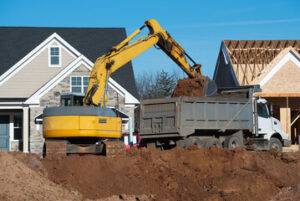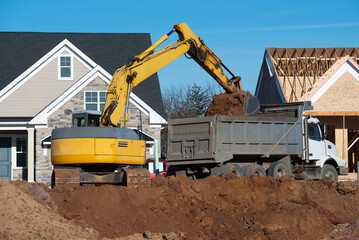Choosing the right excavating contractor ensures smooth and efficient construction projects. Excavation forms the foundation of most construction work. Proper site preparation is essential for structural stability. Skilled contractors handle complex requirements with precision.
Excavating Contractor manages different types of projects. They handle residential, commercial, and industrial excavation. Each project demands specific techniques and equipment. Professional handling ensures accurate results.
Site evaluation is the first step in excavation. Contractors assess soil type, water table, and underground utilities. Proper evaluation prevents future complications. Detailed planning improves project efficiency.
Land clearing involves removing vegetation, rocks, and debris. Contractors use specialized equipment for clearing. Proper disposal of materials follows local guidelines. Clean sites allow safe and effective work.
Grading ensures proper elevation and slope. Uneven surfaces affect structural integrity and drainage. Contractors level the ground using advanced machinery. Proper grading prevents water pooling and erosion.
Excavation depth and alignment require precise measurements. Contractors use surveying equipment to determine levels. Accurate depth ensures proper foundation support. Precision reduces structural risk.
Trenching involves digging narrow and deep cuts. Contractors create trenches for utility lines and drainage systems. Proper width and depth prevent collapse. Reinforced trenches handle soil pressure and shifting.
Backfilling involves replacing soil after installation. Contractors use compacted soil to prevent settling. Proper backfilling improves load distribution. Consistent layers maintain ground stability.
Excavating contractors handle utility installations. Water, gas, and electrical lines require accurate placement. Contractors coordinate with utility providers for alignment. Proper installation ensures safety and function.
Foundation excavation requires attention to soil stability. Contractors reinforce weak soil with compacted materials. Deep excavation improves load-bearing capacity. Proper support prevents shifting and settling.
Drainage systems require precise trenching and alignment. Contractors install pipes and channels for water flow. Proper slope prevents standing water and flooding. Reinforced drainage systems handle heavy rainfall.
Retaining walls require deep excavation and reinforcement. Contractors install steel bars and concrete for support. Proper wall height and alignment resist soil pressure. Well-built walls prevent erosion and collapse.
Road and driveway excavation requires stable subgrade preparation. Contractors remove loose soil and debris. Compacted subgrade improves asphalt and concrete stability. Smooth surfaces handle heavy traffic and load.
Basement excavation involves deep and controlled digging. Contractors monitor soil conditions and water levels. Reinforced walls and floors prevent moisture intrusion. Professional handling ensures structural integrity.
Excavating contractors manage land development projects. Large-scale projects require precise grading and alignment. Contractors handle permits and regulations. Professional oversight prevents delays and errors.
Excavation for swimming pools requires careful planning. Contractors dig according to depth and shape requirements. Proper reinforcement prevents collapse and water leakage. Accurate excavation ensures proper pool function.
Excavation for septic systems involves soil testing and depth adjustment. Contractors dig according to tank size and slope. Proper trenching improves drainage and waste management. Reinforced systems handle heavy loads and usage.
Excavating contractors handle demolition projects. Controlled demolition prevents damage to surrounding structures. Contractors use specialized equipment for safety and accuracy. Proper debris removal ensures clean sites.
Rock excavation requires heavy equipment and skilled handling. Hard soil and rock formations resist standard digging. Contractors use hydraulic breakers and drills. Controlled removal prevents structural damage.
Slope stabilization prevents soil movement and erosion. Contractors install retaining walls, drainage channels, and vegetation. Proper reinforcement handles shifting and pressure. Stable slopes protect nearby structures.
Soil compaction improves ground stability. Loose soil affects load-bearing capacity. Contractors use rollers and compactors for even pressure. Compacted soil prevents settling and shifting.
Excavation for underground parking requires multi-level support. Contractors dig deep foundations and support columns. Reinforced concrete prevents ground collapse. Proper drainage handles water infiltration.
Environmental excavation requires careful handling of contaminated soil. Contractors follow safety protocols for removal and disposal. Proper site cleanup prevents environmental damage. Professional handling ensures regulatory compliance.
Excavation for bridges and overpasses requires deep and reinforced foundations. Contractors use pile drivers and concrete forms. Proper alignment ensures load distribution. Reinforced supports handle traffic and weather stress.
Excavation for tunnels requires precision and safety. Contractors monitor soil pressure and structural shifts. Reinforced tunnel walls handle ground pressure. Proper ventilation improves safety and function.
Excavating contractors manage airport construction projects. Runways and taxiways require stable subgrade preparation. Contractors use specialized machinery for grading and compaction. Reinforced surfaces handle heavy aircraft loads.
Excavation for industrial plants involves heavy foundation requirements. Contractors install deep footings and reinforced slabs. Proper soil testing improves load-bearing capacity. Professional handling prevents structural failure.
Excavation for warehouses requires wide and stable surfaces. Contractors remove loose soil and debris. Reinforced concrete floors handle heavy equipment and storage. Proper slope improves drainage and load distribution.
Excavation for agricultural projects involves irrigation and drainage. Contractors dig channels and ponds for water flow. Proper slope prevents soil erosion and water pooling. Reinforced channels handle seasonal changes.
Excavation for recreational facilities requires proper grading and drainage. Contractors prepare surfaces for sports fields, playgrounds, and walking paths. Proper reinforcement improves durability and safety. Smooth surfaces prevent injuries.
Excavation for solar farms involves precise panel alignment. Contractors prepare flat and stable ground. Reinforced footings handle wind and weather stress. Proper grading improves water drainage and panel stability.
Excavating contractors handle mining operations. Open-pit and underground mining require heavy machinery. Contractors monitor soil pressure and ground shifts. Controlled excavation prevents collapse and instability.
Excavation for wind farms requires deep foundation support. Contractors install reinforced concrete bases. Proper alignment ensures turbine stability. Reinforced foundations handle wind and weather pressure.
Excavation for water treatment plants requires deep trenching and stable footing. Contractors install pipes and concrete tanks. Reinforced structures handle water pressure and flow. Proper slope ensures efficient operation.
Excavation for sports complexes involves precise grading and surface preparation. Contractors install drainage systems and compact soil. Proper reinforcement improves surface durability. Smooth surfaces enhance player safety and performance.
Excavation for parks and green spaces involves soil testing and grading. Contractors install pathways, seating areas, and drainage systems. Proper slope prevents erosion and water pooling. Reinforced surfaces improve long-term durability.
Excavation for marine structures requires specialized equipment and techniques. Contractors handle underwater excavation with reinforced materials. Proper alignment handles tidal and wave pressure. Reinforced supports improve structural stability.
Excavating contractors manage landscaping projects. Level surfaces and proper drainage improve lawn and garden health. Contractors install retaining walls and pathways. Reinforced surfaces handle foot traffic and weather changes.
Excavation for transportation infrastructure requires deep foundation and drainage work. Contractors handle roads, railways, and airports. Proper grading and reinforcement improve load handling. Reinforced surfaces resist wear and pressure.
Excavation for military bases involves deep and reinforced structures. Contractors install secure foundations and drainage systems. Reinforced walls handle pressure and impact. Proper alignment ensures long-term durability.
Excavating contractors handle emergency projects. Landslides, flooding, and soil erosion require rapid response. Contractors stabilize ground and reinforce structures. Proper handling prevents further damage and improves safety.
Choosing the right excavating contractor ensures efficient and accurate work. Skilled handling improves project outcomes and prevents costly repairs. Professional oversight ensures safety and structural stability. Hiring experienced contractors strengthens project success and longevity.





